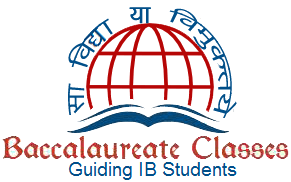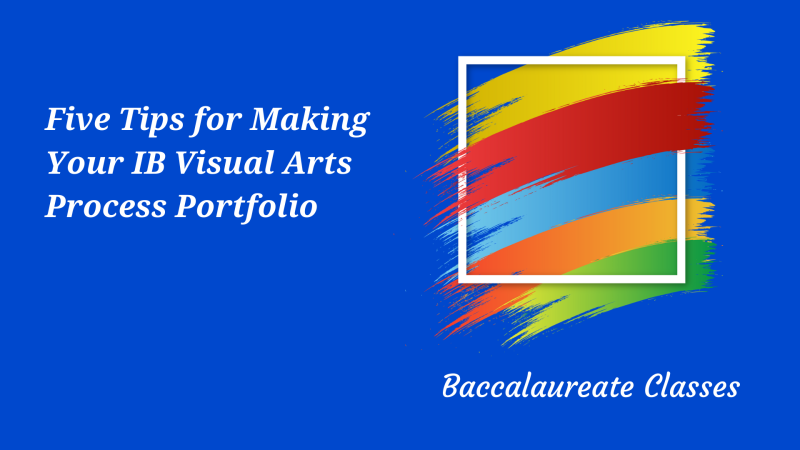OUR BLOG
Five Tips for Making Your IB Visual Arts Process Portfolio
IB Visual Arts is an interesting subject in International Baccalaureate Diploma programme with a lot of scope for exploring, research and developing your very own unique style. However, it is also very tricky to score. From a student and a mentor perspective, this blog will tell you everything you need to take care of to make your PP the very best. The tips are also in the recommended format of your process portfolio.
Make sure you save all your rough sketches, journal pages and click a lot of photographs of each part of the process while making an artwork.
1. KNOW THE CRITERIA AND PLANING YOUR DOCUMENTATION
This is an important step to make sure you include everything that the PP requires. Many students show the entire process of art-making but forget to focus on the criteria. Try planning your pages/slides of your PP so that your headings or sub-headings have terms from the criteria. Reflect on your artworks and plan which artwork best shows which criteria. For example, one of your artworks may have a very strong influence from an artist but the making of the artwork is not very different or depict strong skills and techniques. In this case, show idea development and critical investigation. Keep in mind the page limit and plan accordingly. If you are not sure about certain criteria, do not hesitate to ask your online IB visual arts tutor.
2. COMMUNICATION OF IDEAS AND INTENTIONS
In art-making, generally the artist decides what the concept and intention of their work is. Concept is in other words the meaning behind the work and intention is what you wish the viewer to feel or to gain from your work. Make your concept and intention clear, then move on to brainstorming, idea development and more. Idea is the physical drawing that represents your final artwork. If you are working on the concept of social boundaries, do you wish the viewer to feel trapped? How do you think you can achieve this? What objects, composition, colors, techniques do you think will help you make sure your intention is obvious in your art? Show pages of your journal with brainstorming, rough but legible sketches of your initial ideas and show a clear/numbered path of idea development to your final idea. Discuss which media, techniques etc. you think from your pre-existing knowledge would help you achieve the intention through your idea development. A visual and textual balance here is critical to score high grades. You should have these aspects in processes of all your works but can choose how deep you wish to go. Have at least 4-6 pages dedicated to this criterion alone. It is a good idea to get insights and ideas by discussing options with your IB online tutor.
3. CRITICAL INVESTIGATION
As a student, you must have your works inspired by different artists and therefore should be mentioned in your process portfolio, some in detail while other can have a small paragraph to explain your interest in them and how they inspired you. You may have adapted their style, technique, symbol or medium. Show this when you have developed your ideas or are developing your ideas. If an artist has inspired your technique which you think is consistent with your intentions, dedicate a page to the artwork and complete the Feldman’s analysis. You can even attempt to recreate the artist’s work to show that you have tried to understand the technique. Do not forget to connect your artwork to the artwork/artist that has inspired you. Many students mistake connecting to comparing. You cannot compare your idea or your artwork with the artist’s work. This is not what the examiner is looking for. They want to see that artists have inspired your artmaking and helped you achieve your intentions better than you would have on your own. Make sure this is explicitly mentioned in these pages. You should have artist connections in all your works but have at least 3-4 pages dedicated to critical investigation with a full Feldman’s analysis. Get your analysis proofed by your IB tutor to be sure of its quality.
4. SKILLS TECHNIQUES AND PROCESSES
This criterion holds the major chunk of the marks of your process portfolio. Many students confuse experimentation with idea and concept development. Experimentation is exploring appropriate media, technique or color. Whenever you are making at artwork, you cannot know if a particular medium or technique is appropriate with respect to your intention unless you are inspired by the technique of another artist (wherever relevant) or experiment. Show that your experimentation’s results are consistent with what effect you want in your work (the intention). You should have experimentation in all of your works, but 3-4 slides can be entirely based on experimentation in detail, considering all possible options regarding your initial concept and idea. Make sure you have shown processes in detail using subject – specific language and the necessary techniques in 2D, 3D and lens-based or screen-based forms. You should have at least two to three pages dedicated to just the process. More pages can have little description of the process with few photos if necessary.
5. RE-VIEWING, REFINING AND REFLECTING
When you have completed your artwork and explained the process, you can include a photo of the resolved final artwork in your process portfolio. Do not forget to mention “as in exhibition” to avoid any plagiarism issues. Reflect and re-view your work. Do you think your final piece depicts the concept well? Are all the intentions you previously wished for there? Blowing your own trumpet will not get you marks here and therefore you have to be very objective and critical. If you think you can do better, show brainstorming or idea development again on the same page. If necessary, show some experimentation and critical investigation. Re-make your work and reflect on it too. Reflection need not be very long – a small paragraph will suffice. Have at least 1-2 works that you have re-done completely, and 2-3 pages of reflection with resolved work. You can club reflection and re-making of an artwork and show them on a single page. Another important tip would be to have a sense of reflection and re-viewing at every step of your art making throughout your process portfolio. This will get you to the highest descriptor in this criterion. Discussing with your Visual Arts online IB tutors can help you gain an insight into content for reflection of your artworks and help you make a stronger artwork.
GENERAL TIPS
- Have a visual and textual balance in all your pages.
- Show a lot of pieces of your journal pages. Use these for sketches, drawings and brainstorming.
- The quality of your journal pages and the level of skill they show can sometimes give you a higher grade than you would have got.
- Try and have as much text as you can on PowerPoint or any other software you are using. This will reduce any chances of illegible handwriting and saves space for more details.
- Do not hesitate to ask your IB Visual Arts online tutor for feedback at any point.
These tips should get you on your way of scoring 7 points in IB VA process portfolio. If you need any extra help in understanding anything at all, IB online Visual Arts tutors at Baccalaureate Classes are always there!

